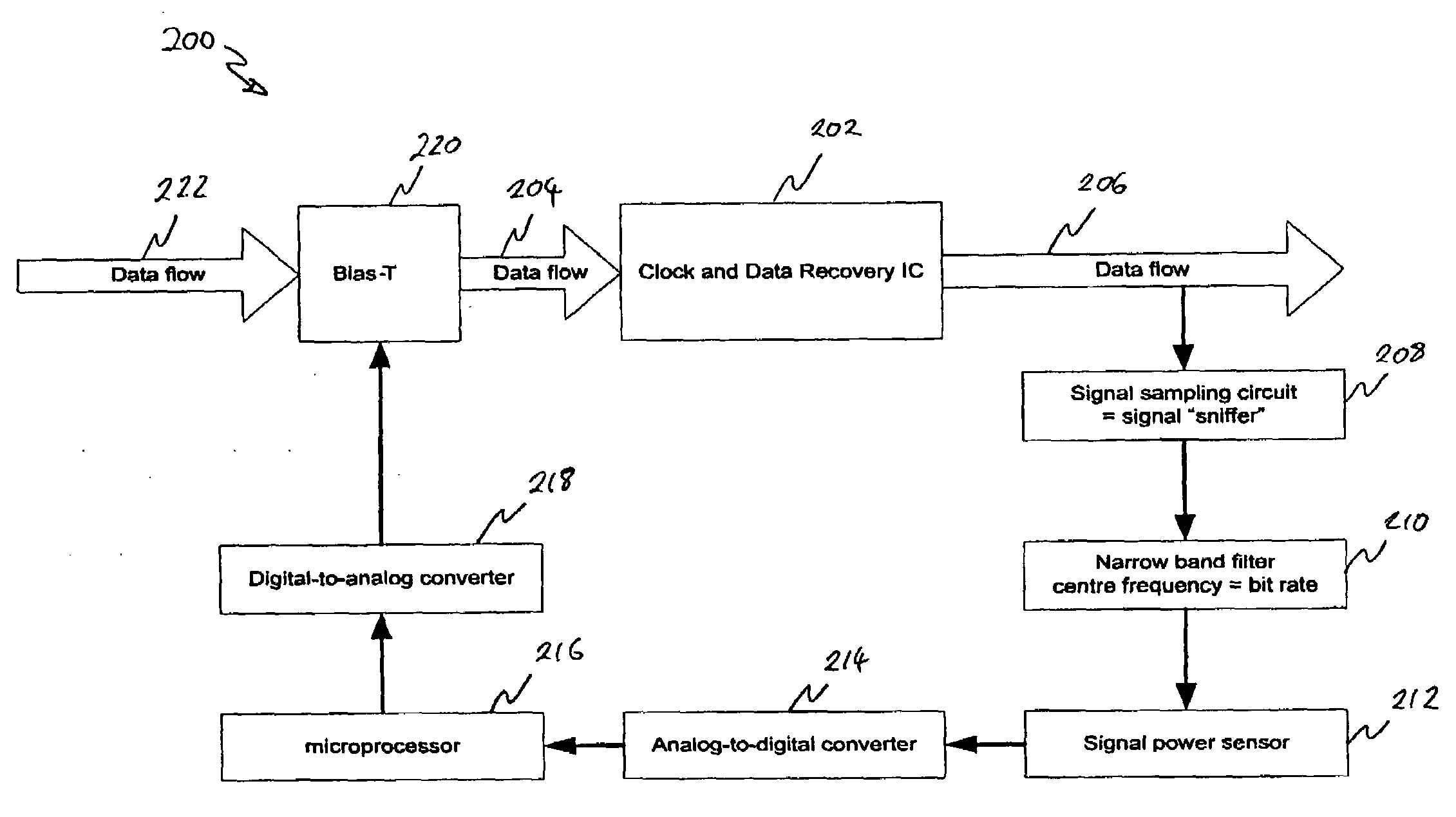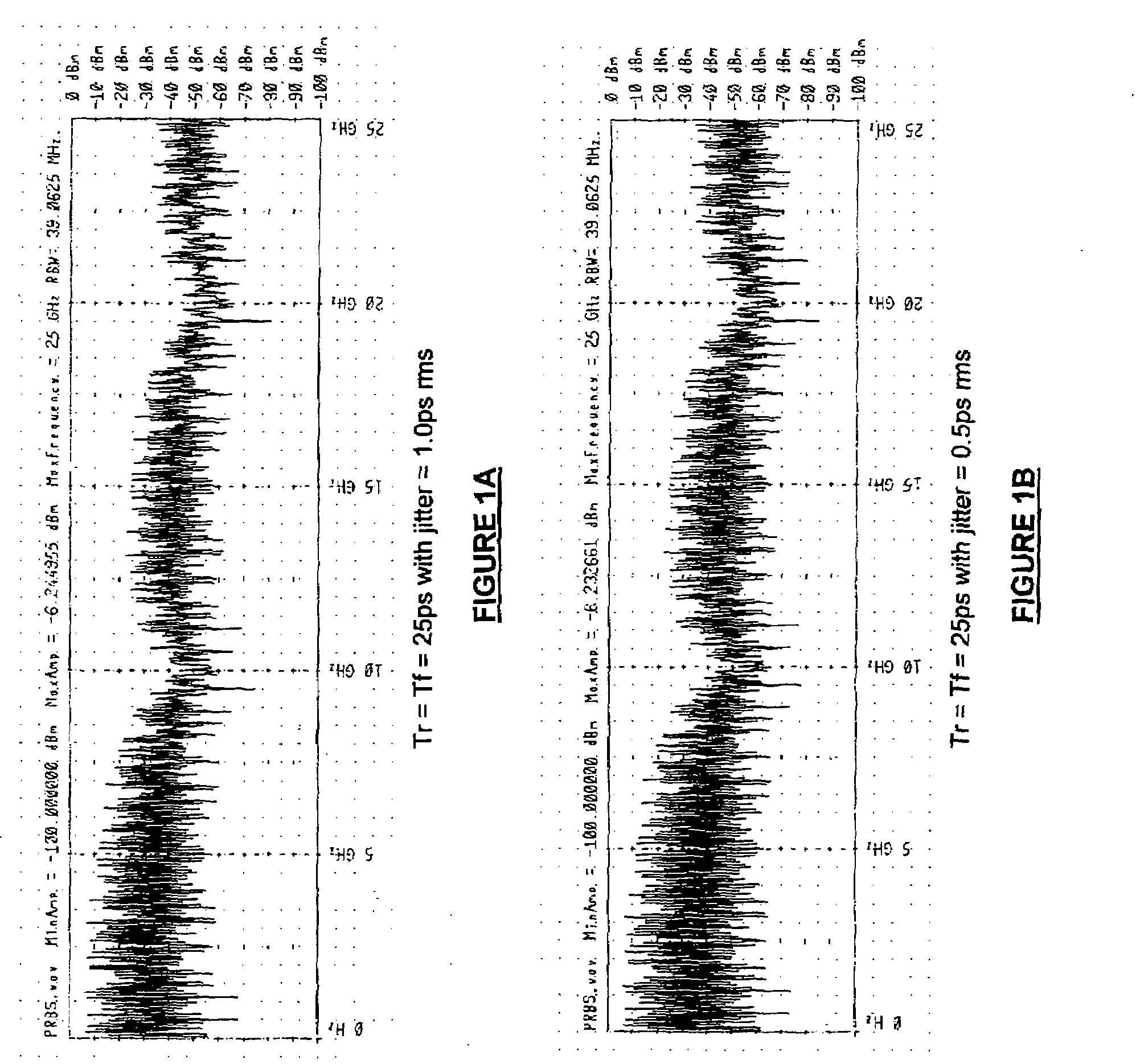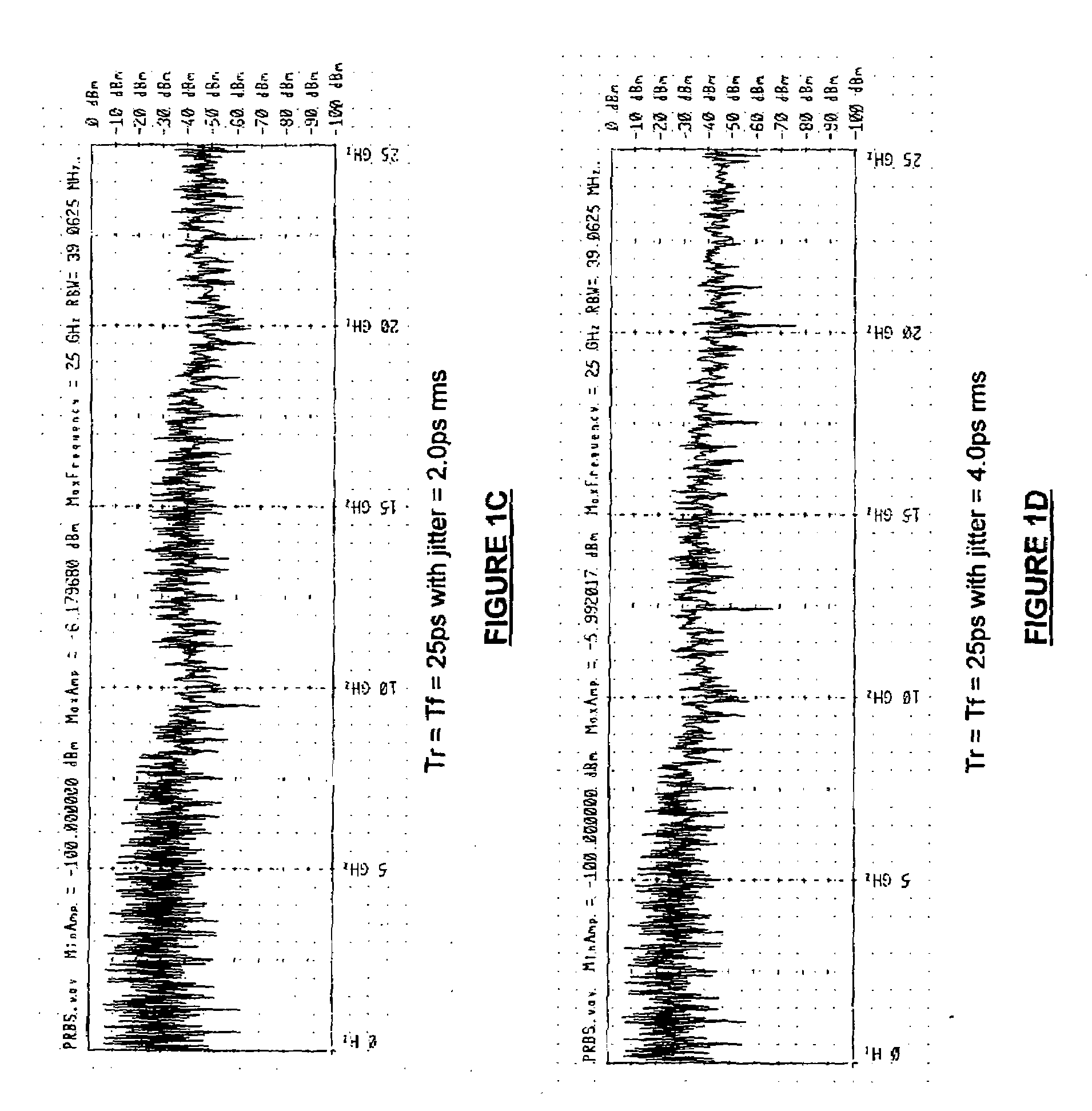Jitter detection and reduction
a jitter detection and reduction technology, applied in the field of jitter detection, can solve the problems of introducing jitter in the transfer process, and affecting the quality of signals produced by cdr circuits, so as to reduce jitter, reduce jitter in the output digital data signal, and reduce jitter
- Summary
- Abstract
- Description
- Claims
- Application Information
AI Technical Summary
Benefits of technology
Problems solved by technology
Method used
Image
Examples
first embodiment
[0041]a system for utilising the above technique for detecting jitter can be seen with reference to FIG. 2. This figure shows a CDR system 200 for reducing the jitter present in the output signal by adapting a DC offset applied to the input signal.
[0042]The system 200 comprises a CDR IC 202, which receives an input data signal 204, upon which a clock and data recovery process is performed to produce an output data signal 206. A signal sampling circuit 208 (also known as a signal “sniffer”) is used to extract a portion of the output signal 206 for processing. The signal from the sampling circuit 208 is passed through a narrowband filter 210. The centre frequency of the narrowband filter 210 is the bit rate of the input signal (or a multiple thereof, if an alternative null is being measured). Therefore, the narrowband filter 210 passes only the component frequencies that are present about the null shown above with reference to FIGS. 1a to 1d.
[0043]The narrowband filtered signal is pr...
second embodiment
[0046]the present invention is shown in FIG. 3. This figure shows a CDR system 300 with improved jitter determination. The system 300 in FIG. 3 comprises the same CDR IC 202 with a data signal input 204 and output 206 as shown previously in FIG. 2.
[0047]The output signal 206 is provided to a signal sampling circuit 302 which differs from that shown in FIG. 2 in that it produces two outputs. The first output is provided to a narrowband filter 210, signal power sensor 212 and ADC 214 in the same manner as described above with reference to FIG. 2 to provide a digital representation of the power at the null in the spectrum.
[0048]The second output of the signal sampling circuit 302 is provided to a wideband power sensor 304. The wideband power sensor 304 senses the power in the output signal over a much wider band than the power sensor 212. Typically, the wideband power sensor 304 senses the spectral power from a low frequency (LF) just above DC (i.e. close to 0 Hz) to just below the bit...
third embodiment
[0051]the present invention is shown in FIG. 4. This figure shows a CDR system 400 in which the jitter is minimised by controlling the loop bandwidth of the PLL 402 within the CDR IC 202.
[0052]In the embodiment shown in FIG. 4, the jitter is measured and determined in the same manner as described previously with reference to FIG. 3. Once the microprocessor 308 has determined the jitter it calculates an adjustment to be made to the loop bandwidth of the PLL 402 in order to minimise the jitter. The loop bandwidth of the PLL 402 is determined by the bandwidth of the loop filter. As mentioned previously, the bandwidth of the loop filter of the PLL 402 within the CDR IC 202 is controlled by the value of external components to the CDR IC 202, such as a resistor, a capacitor or a combination of a resistor and capacitor. The microprocessor determines the adjustment required to these external component values in order to achieve the required loop bandwidth to minimise the jitter.
[0053]The mi...
PUM
 Login to View More
Login to View More Abstract
Description
Claims
Application Information
 Login to View More
Login to View More - R&D
- Intellectual Property
- Life Sciences
- Materials
- Tech Scout
- Unparalleled Data Quality
- Higher Quality Content
- 60% Fewer Hallucinations
Browse by: Latest US Patents, China's latest patents, Technical Efficacy Thesaurus, Application Domain, Technology Topic, Popular Technical Reports.
© 2025 PatSnap. All rights reserved.Legal|Privacy policy|Modern Slavery Act Transparency Statement|Sitemap|About US| Contact US: help@patsnap.com



